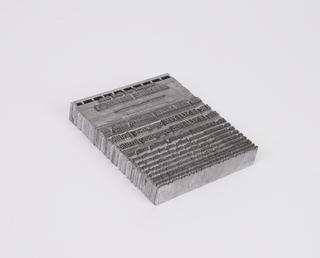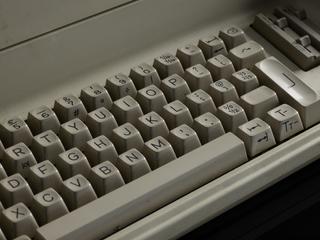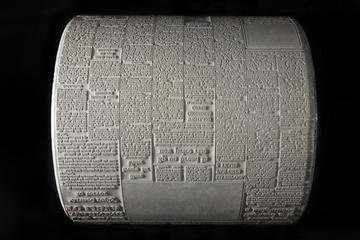Hansen's Writing Ball, also known as Malling-Hansen Writing Ball
- designer:
- Hans Rasmus Malling Johan Hansen














Malling Hansen Writing Ball, patented in 1865, of about 1875, a typewriter with keys radiating to a common printing point.
The Malling Hansen “writing ball” displayed all the significant refinements of writing machines introduced 40-50 years later: automatic carriage return and line spacing, a space bar, a bell to signal the end of the line, provision for carbon paper copies, a ribbon reverse and — most significant of all — visible writing by raising the typing mechanism.
The main component of the writing ball is a hemisphere of 54 spring-loaded and engraved alpha-numeric typebars supported on three nickel plated columns with set-screw adjustment and geared mechanism. Each of the fifty-four typebars is aligned at a different angle, yet all converge on the paper at a common point.
The Malling Hansen “writing ball” was designed by Reverend Rasmus Malling-Hansen (1835-1890), Copenhagen, Denmark, principal of the Royal Institute for the Deaf and Dumb, Copenhagen. Malling Hansen designed his unique ergonomic typewriter in 1865 to help students to “speak with their fingers.” The machine was patented in 1870 and 1875 and was made in Copengahen.
In 1870, Malling Hansen first patented and began the manufacturing of his writing ball and, as such, the Malling Hansen “writing ball” is considered the world's first commercially produced typewriter. Malling-Hansen positioned letters, numbers and symbols on a hemisphere to facilitate speed of writing (typing), with the vowels operated by the fingers of the left hand, the consonants by the fingers on the right. The intended result was that his writing ball would be easily two or three times the speed of writing and, with practice, could be as quick as speaking.
A journalist visiting the Paris World's Fair in 1878 compared the Writing Ball favourably with the new Sholes & Glidden "Typewriter" introduced by E. Remington & Sons of Ilion, New York, in 1874. “The Danish apparatus has more keys, is much less complicated, built with greater precision, more solid, and much smaller and lighter than the Remington, and more-over, is cheaper.”
However, the Malling Hansen “writing ball” was not a commercial success and, from a total of only 180 machines ever produced, only thirty-eight are believed to have survived: thirty in museum collections including the Science Museum, and a handful still in private hands.
The writing ball's most celebrated user - but not its happiest - was the German philosopher Friedrich Nietzsche who wrote about his struggle with the "writing ball" in poetry: "The writing ball is a thing like me:/Made of iron yet easily twisted on jour-neys/Patience and tact are required in abundance/As well as fine fingers to use us."
Details
- Category:
- Printing & Writing
- Object Number:
- 1906-9
- Materials:
- steel, brass and coated metal
- Measurements:
-
overall: 260 mm x 760 mm x 580 mm, ,
- type:
- typewriters
- credit:
- Jensen, P.





